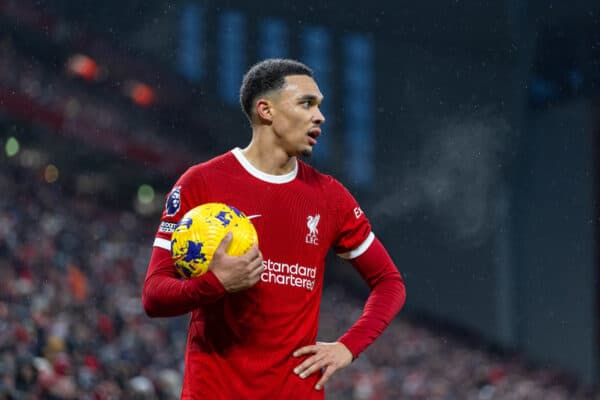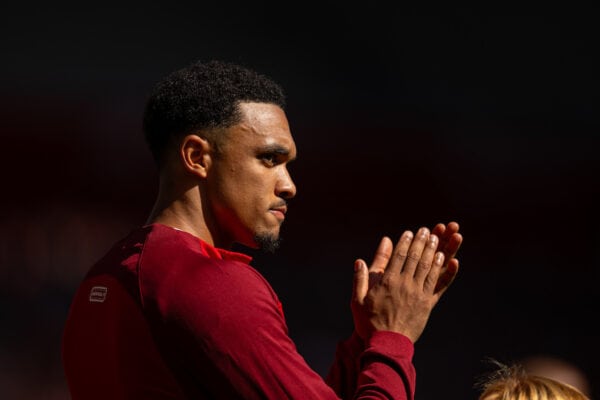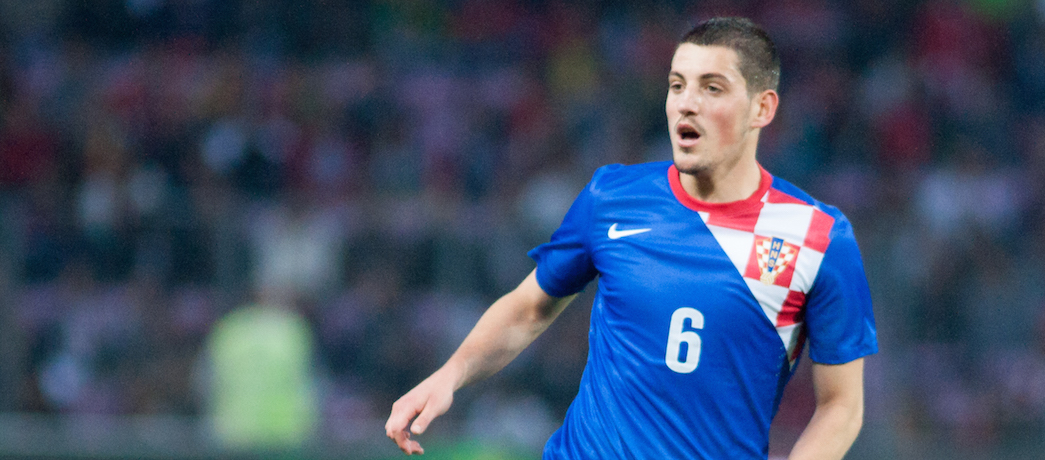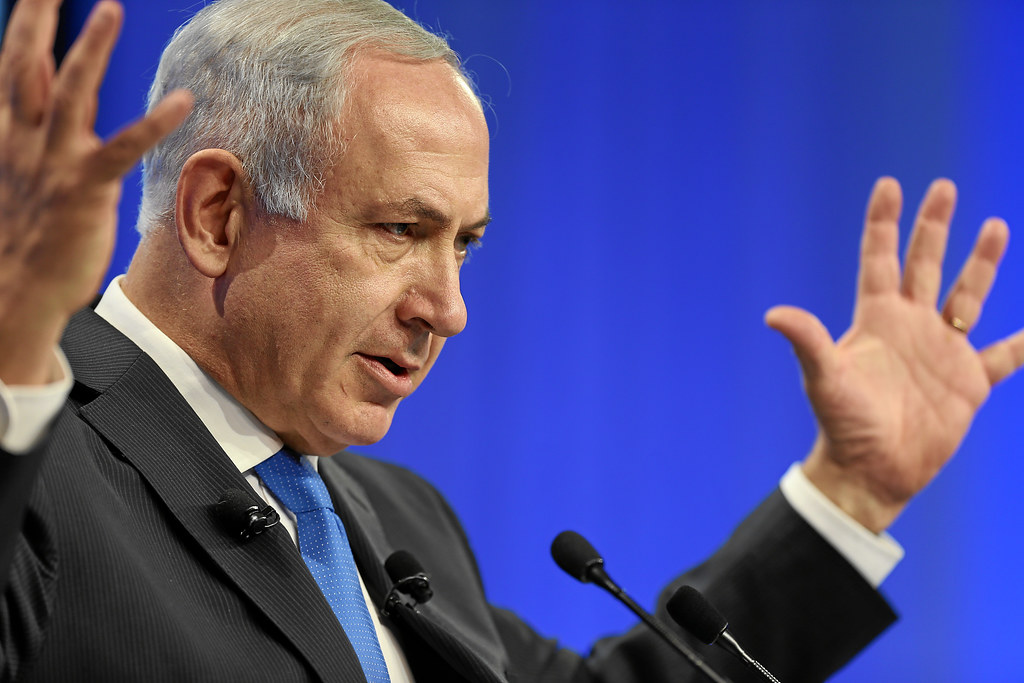There is no question that Trent Alexander-Arnold‘s imminent return to action represents a major boost to Liverpool’s hopes of further glory this season.
But it is also fair to say that events in his absence have only served to reignite the debate over which position Jurgen Klopp would be best served to deploy him in.
Prior to Alexander-Arnold’s recent knee injury, it seemed the question over his role had been emphatically answered by both his form and that of the team as a whole.
For starters, Liverpool almost salvaged a forgettable 2022/23 campaign by freeing up the 25-year-old in April last year, winning seven and drawing three of their final 10 fixtures.
And that improvement sustained into this season, as shown by the fact that the Reds recently played their 38th game since their change of system having picked up more points than any other team in that period barring Man City (both 88).
Why, then, would anyone suggest ripping up the tactical blueprint that has brought such good results?

Well, it is worth noting that, across the 14 games Alexander-Arnold has missed through his knee problem and its recurrence, Liverpool have posted 11 wins, two draws, and just one defeat.
It is a return that suggests their resurgence this term is a result of multiple factors, rather than a simple tweak of position for one of their key men.
What’s more, the form of his replacement, Conor Bradley, has been eye-catching enough to make the case that Klopp does not necessarily need to be wed to asking his right-back to play in a certain way.
Clearly, it would be madness to claim that the 20-year-old is a better player than a man who has won every honour available during his time as Liverpool’s right-back.


But, even accounting for a small sample size and the general tendency to overstate Alexander-Arnold’s weakness on this front, Bradley has shown signs of being superior in specific defensive elements of the game.
In the Premier League this season, the Northern Irishman has won a higher percentage of tackles (84.2% to 67.9%), duels (57.9% to 45.9%), and has been dribbled past less frequently per 90 minutes (1.81 to 2.6).
Of course, all this can be caveated with the fact that he is not in the class of his fellow right-back in possession, with Alexander-Arnold quite simply one of the best passers of the ball in world football.
Yet that gets to the crux of the discussion over what Klopp wants from his right-back and whether the trade-offs required are entirely worth it.


When it comes to Alexander-Arnold starting there, it would be an utter waste not to ask him to walk into midfield at every opportunity in order to make full use of his wonderful passing range.
But that comes with drawbacks, namely a gaping hole in his nominal position that can be exploited in turnover, resulting in an over-reliance on Ibrahima Konate‘s ability to cover large spaces.
By contrast, whenever Joe Gomez or Bradley have been deployed at right-back, this inversion has been far less pronounced, with both men simply asked to pick their moments to make an extra man in the middle.
And, on the surface at least, this has made Liverpool feel far more defensively secure than when they have consistently asked a member of their back four to vacate his position.


Admittedly, it is hard to imagine Klopp ditching this setup – or, indeed, the terms of a bet with Pep Lijnders that started this experiment – ahead of a run-in in which two more trophies are at stake.
But with a new manager coming in this summer and Liverpool having recently shown they can win in a different way, it could well be that Alexander-Arnold is preparing for his last outings in the position he has called home for so long.





















